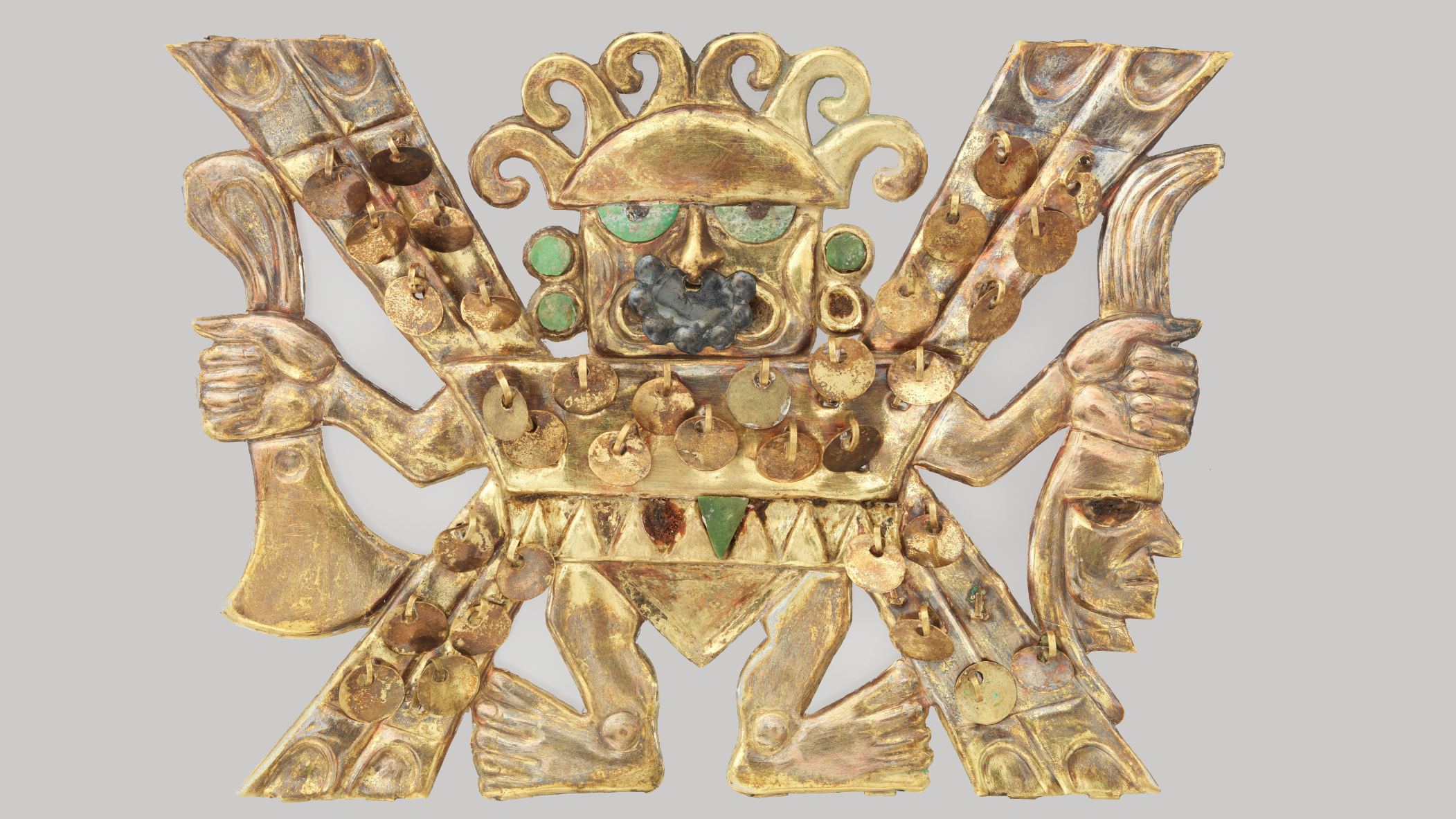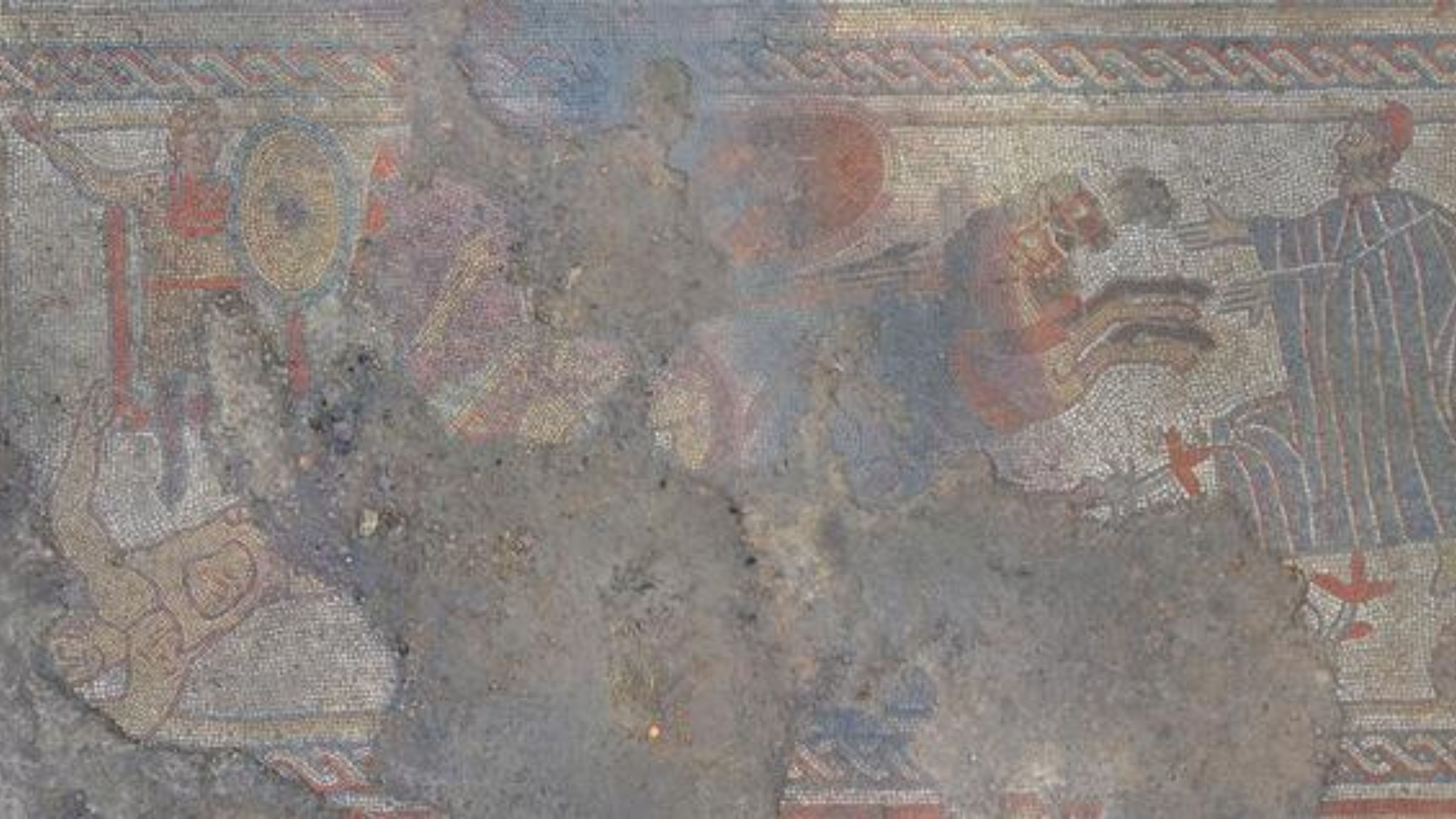Decapitator nose ornament: 1,500-year-old gold jewelry depicting a bloodthirsty South American god
The Moche made human sacrifices to their gods, including Ai Apaec, the Decapitator.

Name: Nose ornament with Decapitator
What it is: A gilded copper nose ornament
Where it is from: Peru
When it was made: Between A.D. 200 and 900
This gilt-copper nose ornament, discovered at the archaeological site of Loma Negra in northern Peru, depicts the important Moche deity Ai Apaec, also known as the Decapitator. The ornament is inlaid with accents of turquoise and black stones for his pupils.
In Moche mythology, Ai Apaec was the supreme creator, a deity who had the power to subdue and restore order. In art from the time, he is commonly depicted with a human face, jaguar fangs, and a spider-like body, along with a ceremonial knife called a tumi in one hand and a decapitated human head in the other to represent his power to subdue.
The Moche, also known as the Mochicas, lived on the coast of northern Peru from A.D. 200 to 900, prior to the rise of the Inca Empire. This piece of jewelry was found at Loma Negra, a rich Moche site near the Ecuadorian border. Hundreds of gold, silver and copper artifacts were looted from tombs at Loma Negra in the late 1960s, but many of them, including this ornament, were eventually donated to the Metropolitan Museum of Art in New York City.
The Decapitator ornament measures 2.8 by 3.9 inches (7 by 10 centimeters) and was made out of a sheet of gilded copper. Semiprecious stones accentuate the Decapitator's eyes, earrings and belt. Ai Apaec also wears a large, silver nose ornament. The tiny figurine was likely attached to a piece of silver so that someone could wear it as a nose ornament. But because most of the Loma Negra artifacts were looted from graves, it is unclear whether this ornament was associated with a specific person.
Archaeologists have found that the Moche practiced human sacrifice to honor their gods. This ritual was performed for political reasons, such as the killing of captured enemies, but recent research has shown that family members were also sometimes sacrificed to their high-status relatives.
The Decapitator is closely associated with spiders in Moche iconography, but experts are unsure exactly why. According to The Met, "perhaps the manner in which spiders trap their prey in a web and liquefy their internal organs was considered analogous to the Moche practice of prisoner capture and sacrifice by bloodletting."
For more stunning archaeological discoveries, check out our Astonishing Artifacts archives.
Get the world’s most fascinating discoveries delivered straight to your inbox.

Kristina Killgrove is a staff writer at Live Science with a focus on archaeology and paleoanthropology news. Her articles have also appeared in venues such as Forbes, Smithsonian, and Mental Floss. Kristina holds a Ph.D. in biological anthropology and an M.A. in classical archaeology from the University of North Carolina, as well as a B.A. in Latin from the University of Virginia, and she was formerly a university professor and researcher. She has received awards from the Society for American Archaeology and the American Anthropological Association for her science writing.
You must confirm your public display name before commenting
Please logout and then login again, you will then be prompted to enter your display name.


